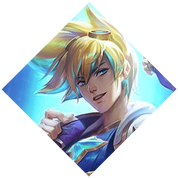
With more than 150 million players worldwide, League of Legends is arguably the most popular game in its genre—the multiplayer online battle arena (MOBA)—and beyond it.
The end of a season is pretty important, since rewards are given out based on your performance and final rank. However, with the recent changes to the yearly season schedule, keeping up with knowing seasonal dates is becoming harder. Here's an easy-to-follow breakdown to help you out!
The current season is Season One of 2025. It started on the 10th of January and is scheduled to last until around April 8th, at which point the new seasonimmediately starts.
Season 15 (or 2025 Year) changed the naming scheme. First of all, Riot is changing the whole “season” thing altogether, resetting the official name to Season One and starting the count all over again.
Instead of each season taking an entire year, each year will now have multiple seasons—three seasons within one year, to be exact. They've obviously done away with splits as well—otherwise they would last a month or less.
| 2025 Year | Start dates | End dates |
| Season 1 | 10th January | TBD (Estimated: April 8th) |
| Season 2 | TBD (Estimated: April 9th) | TBD (Estimated: September 9th) |
| Season 3 | TBD (Estimated: September 10th) | TBD (Estimated: January 9th) |
Each of these seasons feature two Acts—kind of like Valorant's episode structure. So, get ready for a more structured flow throughout the year. Splits are also getting scrapped. While you'll still get ranked rewards, it won't drop your account right back to unranked every couple of months. This should make reaching at least gold rank for easy Victorious skins much easier.
Each year from 2025 will introduce a full thematic event centered around one of the regions in Runeterra, shaping all content additions during the entire 3 month duration; Skinlines, new champions, updates, map skins, emotes... it's all gonna revolve around that one region. Season 15 kicks off with Noxus and will give some special attention to the Black Rose, which was heavily teased in Arcane's second season.

We don't yet know what the next season holds in store lore-wise, but we're likely to see similar attention, where older lore and characters will be reworked and given some love, with the effort of making Runeterra into the deep and varied setting it always wanted to be.
The
Battle Pass took the reins as the primary source of gameplay rewards, replacing Masterwork and Mastery chests. Players can expect to get access to 8 free sets of Hextech Chests and Keys, on top of Victorious Skins for completing the ranked season having fulfilled the requisites for them. On the paid battle pass, you can obtain unique skins, event-exclusive loot and Ancient Sparks.
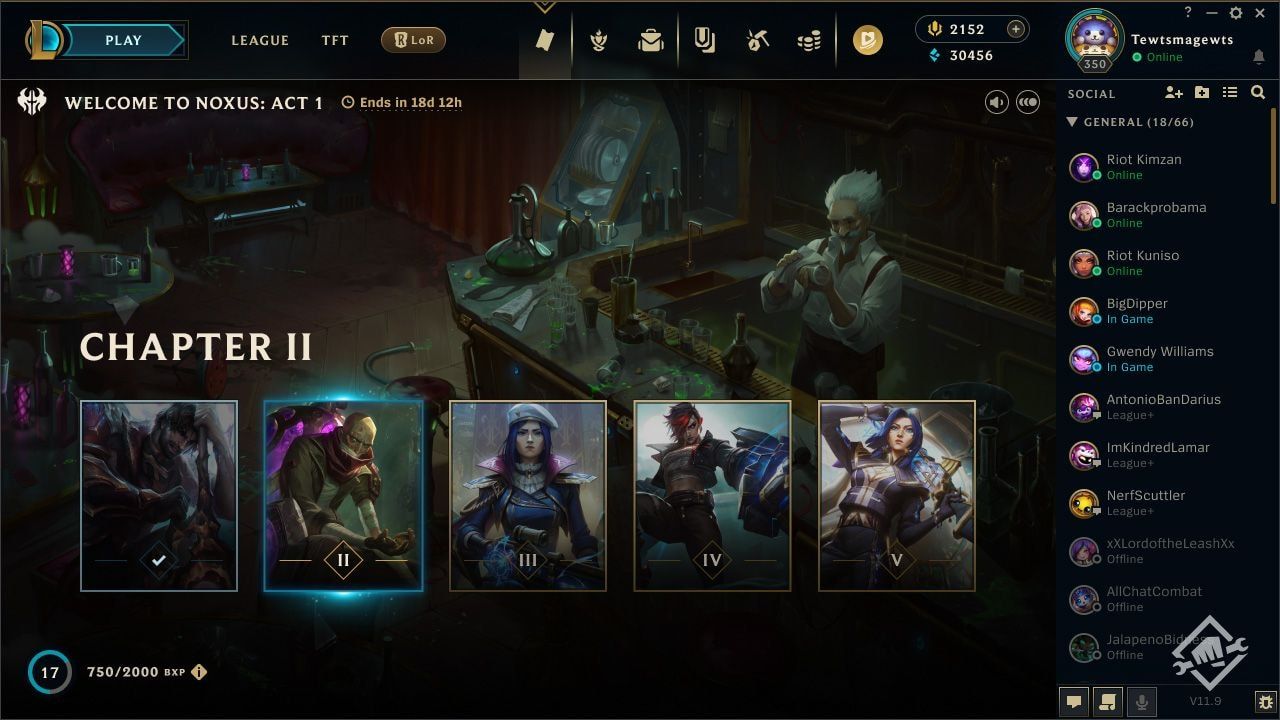
The Honor System is also getting a major rework. Honor now directly affects rewards and in-game perks, and players with high Honor will get extra pass experience and social goodies, including pings, All Chat, and emote frequencies. The Honor Shop and Tokens are a thing of the past, and skins like Three Honors Shen will be Honor-exclusive. Shen will get a brief return at the start of the season, and then his skin lineup will be replaced with rewards based on your Honor level.
As for Chests, Masterwork Chests will be sunset by March 2025. Hextech Chests will remain available for skin shard acquisition. It should be noted that with the removal of Masterwork Chests, Mythic Essence can no longer be traded in for chests.
Champion Mastery is getting a smooth integration into the Battle Pass, and you'll earn Battle Pass Experience when you hit Mastery milestones. Your
Mastery progression isn't going anywhere, but it will now count toward your BXP progress, so you'll earn rewards at a similar rate across all game modes, including ARAM. This is, in my opinion, the best version of Mastery progression we've had so far— older systems would punish or reward maining champions or having a consistent pool, with the intention of getting you to play new champions. This strikes a great middle ground for both fill players with wide pools and OTPs that only play a single role.
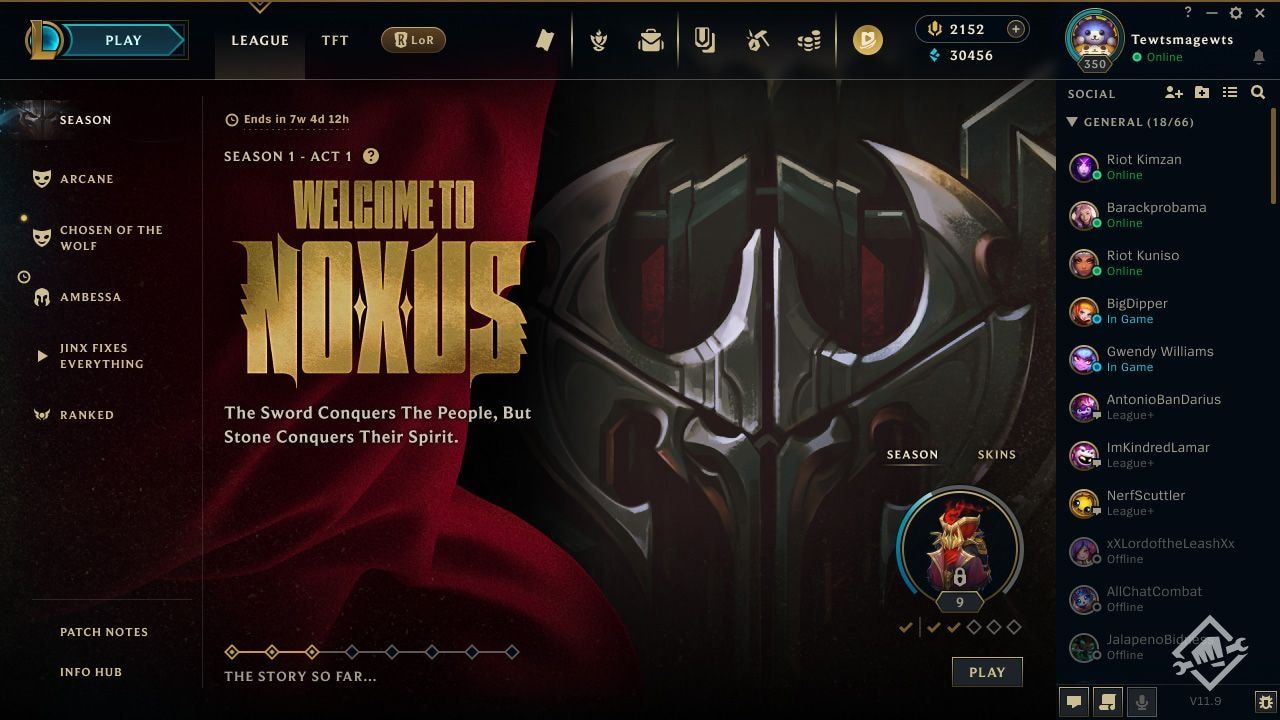
Last but not least, Mythic Variants and Showcase Capsules are being sunset, and Mythic Variants are being reworked as tiered rewards in the Sanctum with bad luck protection. Event Orbs will be the only capsule-like item, and the system is being streamlined overall
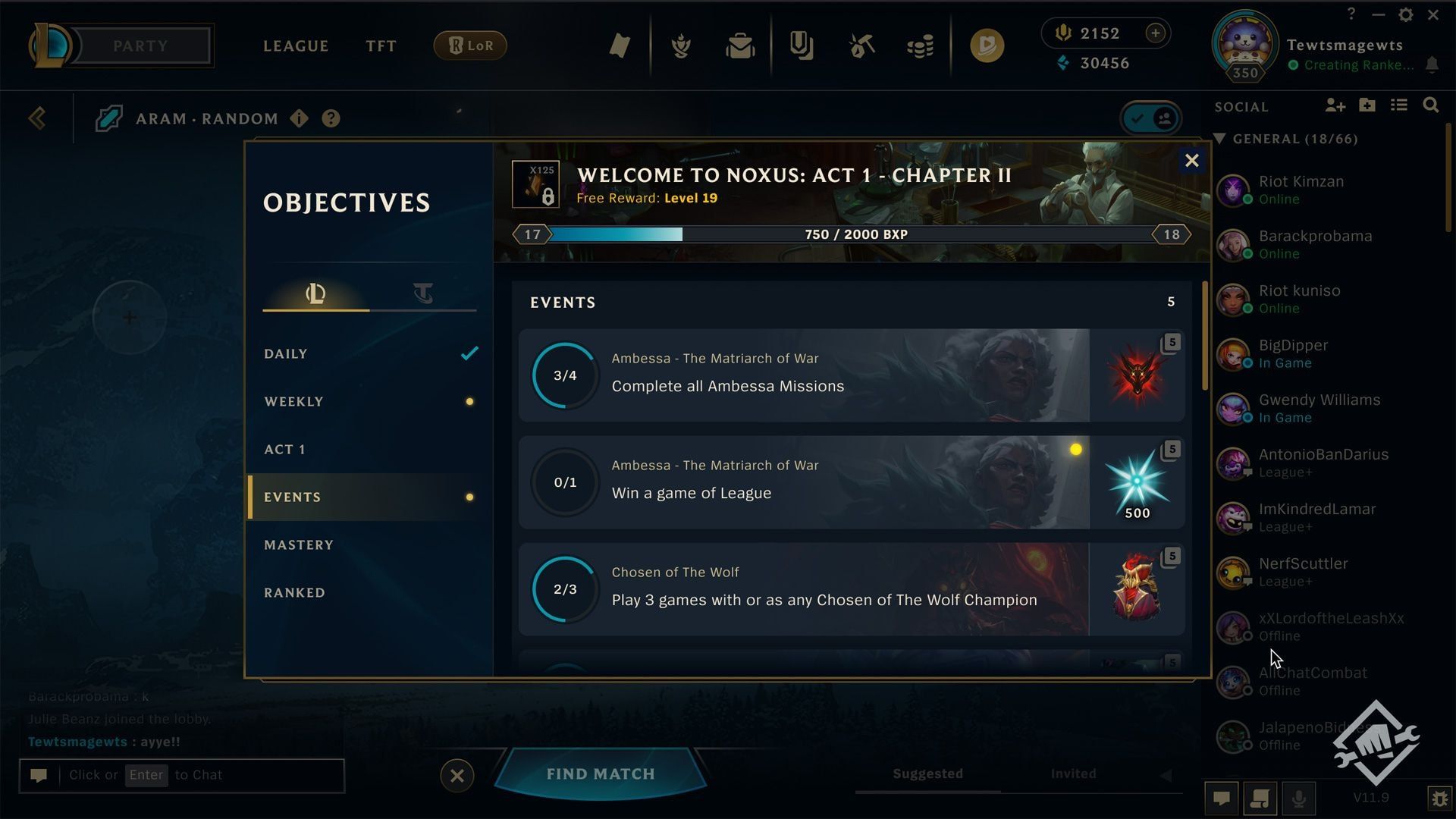
Every purchase at UnrankedSmurfs comes with our lifetime guarantee. Trusted by over 150,000 customers.

A year in the League of Legends traditionally was divided into two periods, a preseason and a regular season. The regular season was about 10 months long, and preseason took up the remaining part of the year, which served as a teaser and testing ground for content that'd be featured in the new season.
League of Legends hasn't kept the throne for itself by recooking the same old formula since 2009, it's a fully dynamic ecosystem that evolves with each passing year (or used to) in the form of Seasons.
Each year, League of Legends ran a specific "season," which typically lasts about nine months, with a sweet little break at the end called Preseason. That’s when Riot Games hits the reset button, makes a few tweaks, and gets ready for the next round of chaos. These seasons come with a slew of new features, updates, changes, and—most importantly—item reworks for the 7000th time.
But what makes each season so important? Well, for starters, they determine the competitive landscape of League of Legends. Ranked play, which is at the heart of many players’ LoL experience, operates on a seasonal system where your rank resets at the beginning of each split (more on that later) for a chance to claim a Victorious skin.
Starting with Season 11 and continued in Season 12 and 13, Riot Games split the year into two “splits.” Each split had its own ranked reset, its own Victorious skin, and mid-level content update (reworks, mini-revisions to core gameplay systems...). It was a solid way to keep the game fresh—until it wasn’t.
In the middle of the season, there was a soft rank reset, after which you will receive a victorious skin. This means all players will be eligible to receive 2 victorious skins each year.
The last year (2024) was divided into three Splits, and players received rewards after each. At the end of each season, based on the overall performance, players gain special skins, emotes, and icons based on their rank.
You see, by the end of Season 14, players were starting to get real frustrated. Turns out climbing through the ranks three times a year wasn't all that fun, who would have though? Certainly not Riot. The solution? Keep the 3 splits not renamed to seasons, but without the ranked resets.
An LoL season is also the time period of official competitive tournaments organized by Riot Games and other eSports organizers. These events are held by professional LoL leagues in different regions, primarily in Asia, North America, Latin America, and Europe. LoL leagues are also hosted in Middle-Eastern countries and North Africa.
Globally, there are twelve Tier 1 leagues, two League cups, and nearly two dozen Tier 2 professional, semi-professional, and amateur leagues. Professional events held in each league are all part of an ongoing League of Legends season. In each league, the best teams advance to the playoffs; consequently, the winners will get a shot at the championship. Afterwards, the best teams from each region are invited to the League of Legends World Championship.
Since the 2010/2011 season, Riot Games and other LoL eSports organizers have hosted 12 competitive LoL seasons. Each season starts and finishes at approximately the same period each year; however, depending on patch updates and related matters and unforeseen factors, there may be slight delays and inconsistencies at the start of each season.
As we noted, teams in different regions compete in professional and semi-professional leagues to improve their position and rank, hoping to qualify for the championship at the season's end.
This network of multinational professional LoL contests, which include regular ranked games, playoffs, and the annual championship tournament, is what the average LoL season is composed of. Together, all these events create the LoL eSports ecosystem, where professional teams and players vie for monetary rewards, trophies, and other prizes.
Until its removal in 2023 with Season 13, each LoL season was preceded by a preseason, during which Riot developers made a slew of technical changes and tweaks to various game elements, including the gameplay, maps, runes, items, and more.
During this period, players could test new patches to familiarize themselves with the changes before they were permanently added to the game at the beginning of the new season. The preseason period was vital for balancing the game, with some changes being rolled back after player feedback—the Chemtech Drake being a notable example, which was retired for almost a year before returning with a completely new design.
Preseason also gave professional players a much-needed 2-month break to recover from the stress of top-level competition. It was equally important for the Ranked system, as Riot implemented a ‘soft reset’ at the start of each new season. Players would begin the new season with a rank about 4 divisions below where they ended, making the preseason rank critical for placement games in the upcoming season.
With its removal, the League calendar shifted to a continuous competitive cycle, streamlining the seasonal structure while focusing on ongoing updates and changes.
The removal of the preseason in 2023 with Season 13 was primarily driven by low player satisfaction and a decline in player engagement during this period. Historically, preseason acted as a testing ground for significant gameplay changes, but many players expressed frustration with the prolonged wait for balance adjustments. This was largely due to the extended winter break that Riot Games traditionally takes from early December to early January, during which development and updates slowed significantly.
As a result, issues introduced during preseason—such as unbalanced items, champions, or mechanics—often lingered in the game for weeks without resolution, negatively affecting the player experience. Additionally, the temporary nature of preseason content made it feel less impactful for players who were eager to jump into Ranked play or enjoy a more stable competitive environment.
| Season | Start Date | End Date |
| Season 1 | July 13, 2010 | October 13, 2011 |
| Season 2 | November 22, 2011 | October 13, 2012 |
| Season 3 | February 1, 2013 | November 11, 2013 |
| Season 4 | January 10, 2014 | November 11, 2014 |
| Season 5 | January 21, 2015 | November 11, 2015 |
| Season 6 | January 20, 2016 | November 8, 2016 |
| Season 7 | December 8, 2016 | November 7, 2017 |
| Season 8 | January 16, 2018 | November 12, 2018 |
| Season 9 | January 23, 2019 | November 19, 2019 |
| Season 10 | January 10, 2020 | November 10, 2020 |
| Season 11 | January 8, 2021 | November 15, 2021 |
| Season 12 | January 7, 2022 | November 14, 2022 |
| Season 13 | January 7, 2023 | November 14, 2023 |
| Season 14 | January 9, 2024 | January 9, 2025 |
| Season 1 | January 10, 2025 | Estimated: April 8, 2025 |
| Season 2 | Estimated: April 9 | Estimated: September 9 |
| Season 3 | Estimated: September 10 | Estimated: January 9, 2026 |
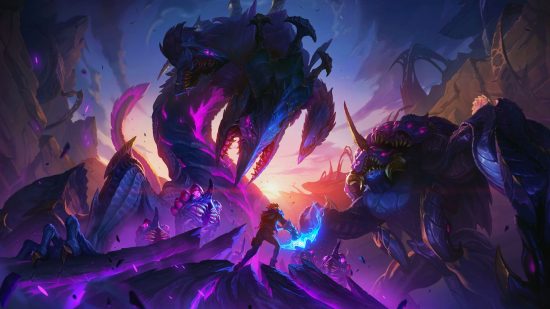
Jan. 9, 2024 - Jan. 9, 2025.
This season brought 3 new champions: Smolder, Aurora, and Ambessa. Riot also dropped a Visual and Gameplay Update (VGU) for Skarner, Art and Sustainability Updates (ASU) for Lee Sin and Teemo, and a full Visual Gameplay Update (VGU) for Viktor.
A big highlight of the season was the introduction of a new skin tier: Transcendent Skins, the most expensive cosmetics you’ve ever seen. We have an indepth standalone article breaking down their addition and the new expectations.
The season had the return of the fan favorite Arena Mode and a new limited-time event: the Anima Squad Event Swarm, with unique objectives and gameplay.
In the Store, Riot brought back the long-requested Essence Emporium, where you could exchange Blue Essence for exclusive items, chromas, and more.
Ranked seasons were still divided into 3 splits: January, May, and September. Players reset their ranks at the start of each split and had to play 10 placement games to get their new rank.
In May 2024, the League of Legends Mid-Season Invitational (MSI) was held in Chengdu, China, featuring twelve top teams from various regions. The grand final between Gen.G from South Korea's LCK and China's Bilibili Gaming (BLG) ended with a 3-1 scoreline with Gen.G securing their first MSI title.
The 2024 League of Legends World Championship, took place from September 25 to November 2 across Berlin, Paris, and London. The grand final was held at London's O2 Arena, where T1 faced Bilibili Gaming. In a thrilling series, T1 clinched their fifth World Championship title with a 3-2 victory.
T1's mid-laner, Lee "Faker" Sang-hyeok, was instrumental in the team's success, earning his fifth World Championship and second Finals MVP award. The final attracted a peak viewership of 6.9 million, setting a new record in esports history.
Jan. 7, 2023 - Nov. 14, 2023
Riot re-introduced the Chemtech Drake, which had been missing from the rift since preseason 12. This season also saw the introduction of four new champions, and a total of 7 updated champions. The five new champions added were Milio, Naafiri, Briar and Hwei.
Ahri, Hecarim, Sivir and Syndra received art and sustainability upgrades, and Aurelion Sol, Ivern, Jax, Neeko, Rell and Yuumi received gameplay updates.
In total, the season had 25 patches. Jak'Sho, Radiant Virtue and Heartsteel were added, and the Iceborn Gauntlet, Spear of Shojin and Rod of Ages were re-introduced. The ping system was expanded, and jungle pets standardized the role, leading to more diverse picks in the jungle. This Season also introduced ranked splits for the first time, having 2 splits throughout the ranked season.
JD Gaming and Bilibili Gaming, both from China, faced off in the MSI finals, with JD Gaming defeating Bilibili Gaming 3-1 and winning their first MSI title. Royal Never Give Up from China were the two-time defending champions, but failed to qualify for the event after losing to Bilibili Gaming in the 2023 LPL Spring Playoffs.
Worlds concluded in the finals where T1 defeated Weibo Gaming by a 3–0 score, marking the organization's record-extending fourth World Championship. The event's concurrent viewership reached a peak of 6.4 million viewers, breaking the all-time viewership record for a single eSports event, not accounting for Chinese viewership.
Jan. 7, 2022 - Nov. 14, 2022
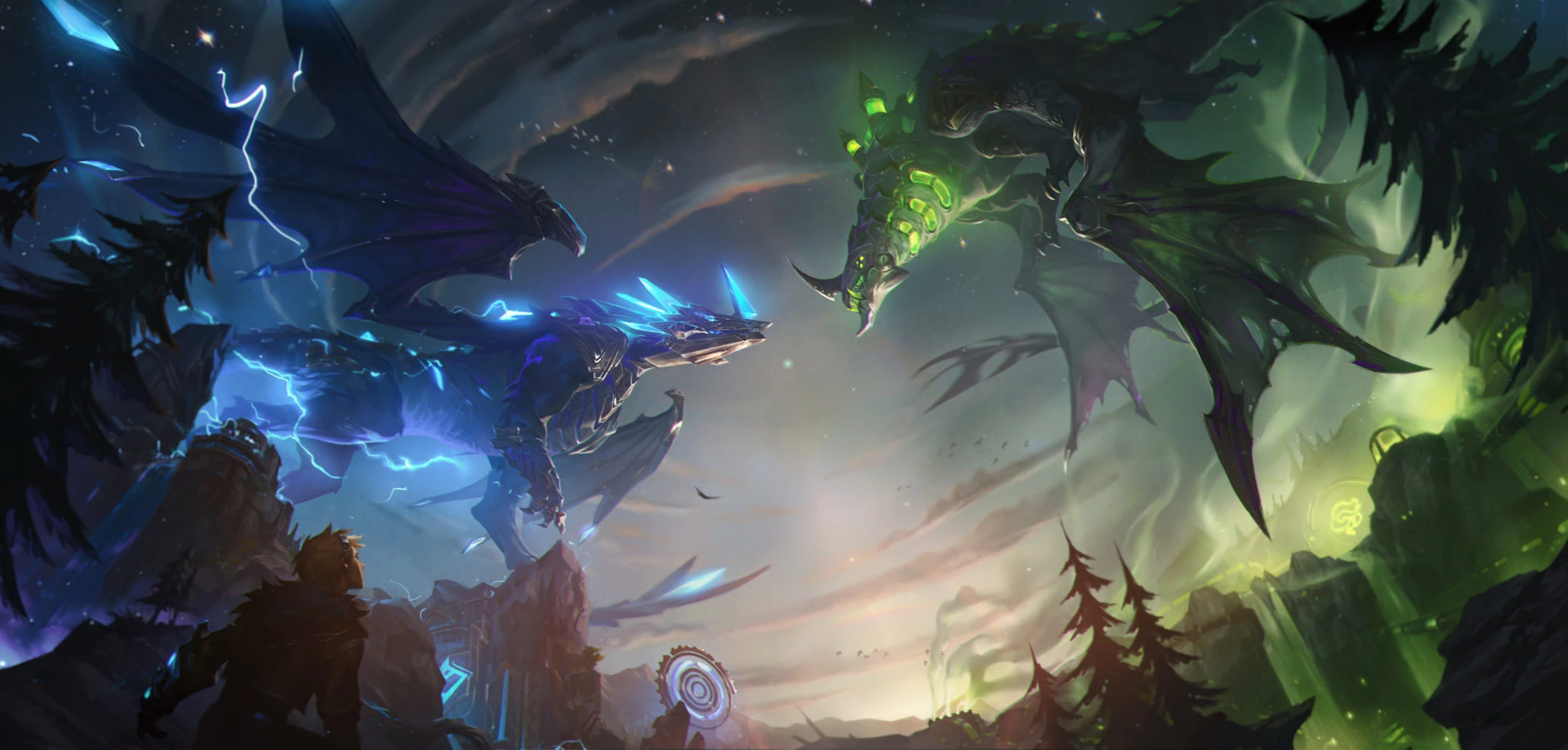
Riot introduced a range of changes and concepts, including the introduction of five new champions and the Challenges system. The LoL Challenges allow players to improve their tier and earn rewards by completing different in-game Challenges.
Five champions were added K'Sante, Zeri, Renata Glasc, Nilah, and Bel'Veth – and 21 patches were introduced. Season 12 saw Royal Never Give Up win their third Mid-Season Invitational (MSI) title, and DRX narrowly beat their South Korean rivals T1 3-2 to become reigning League of Legends world champions.
Jan. 8, 2021 - Nov. 15, 2021
There were a total of 22 patches released throughout the season, and five new champions, including Vex, Akshan, Gwen, Viego, and Rell. Many other existing champions saw visual and gameplay updates, including Xin Zhao, Dr. Mundo, Viktor.
Eight new items were also released, including Fimbulwinter, Shadowflame, Hullbreaker, Winter's Approach, and Anathema's Chains, among others.
In May 2021, China's Royal Never Give Up beat 2020 world champions DWG KIA 3-2 to win the Mid-Season Invitational held in Reykjavík, Iceland. Later that year, in October, also in Reykjavik, Edward Gaming defeated DWG KIA 3–2 to claim the world title.
J
an. 10, 2020 - Nov. 10, 2020

Riot introduced six new champions: Sett, Yone, Lillia, Samira, Aphelios, and Seraphine. The visual, voice, and lore features were updated for more than 20 champions, including Bard, Leona, Lux, Taric, Nautilus, etc.
The 2020 LoL World Championship was held in China, with DWG KIA (then known as Damwon Gaming) winning 3-1 in the final against China's Suning. The 2020 MSI was cancelled due to the Covid-19 pandemic.
Jan. 23, 2019 - Nov. 19, 2019
Sylas, Yuumi, Qiyana, Neeko, and Senna were the five new champions introduced by Riot, alongside 4 new items – Youmuu's Wraithblade, Frozen Fist, Luden's Pulse, and Might of the Ruined King. Gragas, Renekton, Kennen, and Olaf were a few of the champions that saw VFX and SFX updates, and over two dozen champions saw updates to their bio and stories.
Vietnam and Taiwan were the 2019 hosts of the MSI from May 1 through 19, with the May 19 final featuring Germany's G2 Esports against Team Liquid from North America. The German side beat Team Liquid 3-0.
Jan. 16, 2018
- Nov. 12, 2018
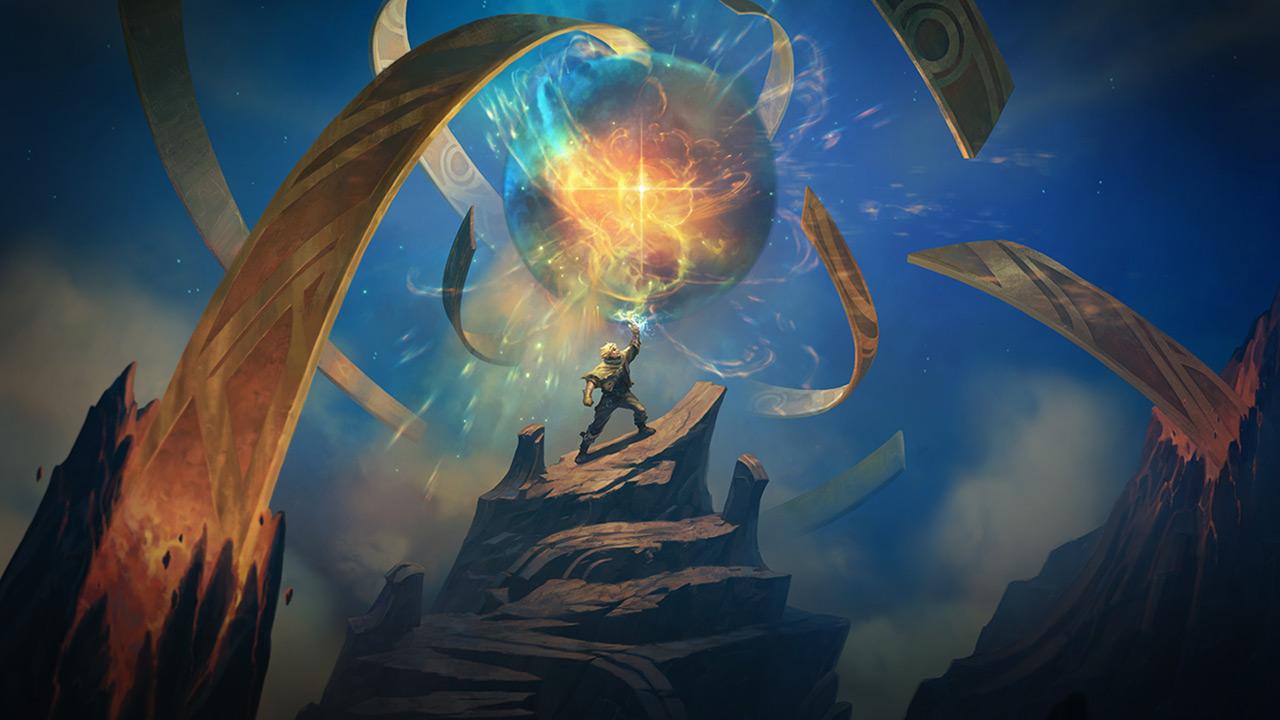
Introduced fans to 3 new champions - Zoe, Kai'Sa, and Pyke – and around three dozen new items. Riot also removed a few items, including Sightstone, Eye of the Oasis, Tracker's Knife, and Eye of the Equinox. Riot also introduced several experimental game modes, including Snow Battle ARURF, OVERCHARGE, Odyssey: Extraction, and Nexus Blitz.
Germany and France hosted the 2018 LoL MSI from May 3 through May 20. Royal Never Give Up faced South Korea's King-Zone DragonX in the final and won 3-1. The 2018 LoL World Championship was seen by a record-breaking 127 million viewers globally.
Dec. 8, 2016 - Nov. 7, 2017
Riot updated the game with three patches during the preseason and 21 more updates throughout the regular season. Ornn, Rakan, Kayn, Xayah, and Camille were that year's 5 new champions, while Control Wards (replacing Pink Wards), Edge of Night, Abyssal Mask, Bramble Vest, and Gargoyle Stoneplate were 5 of the 10 new items. Nearly 30 other champions saw gameplay updates, including Azir, Amumu, Talon, and Rengar.
The Mid-Season Invitational was held in Sao Paulo and Rio de Janeiro in Brazil from late April to May 21. South Korea's defending MSI champions SK Telecom T1, successfully defended the title, beating Germany's G2 Esports in a 3-1 match-up.
Jan. 20, 2016 - Nov. 8, 2016

At least two dozen champions were updated, and 6 new ones were released during the patch cycle. The 6 new champions include Kled, Illaoi, Ivern, Jhin, Aurelion Sol, and Taliyah.
Death's Dance, Cull, Giant Slayer, Hunter's Talisman, and Rapid Firecannon are just a few of the nearly 30 items Riot released that year.
Shanghai, China, was the host of the 2016 LoL MSI, where North America's Counter Logic Gaming lost decisively in a 3-0 game against SK Telecom T1, who took the world title.
Jan. 21, 2015 - Nov. 11, 2015
Riot released 21 patches, six new champions, and 25 new items. The 6 new champions include Kalista, Rek'Sai, Kindred, Ekko, Bard, and Tahm Kench. This is also the season Riot introduced the Champion Mastery progression system and the One For All, Black Market Brawlers, and Nemesis Draft Game Modes.
Season five was the inaugural year for LoL's Mid-Season Invitational, held in Florida with five qualifying teams. China's Edward Gaming won the inaugural MSI 3-2 against South Korean rivals SK Telecom T1.
The 2015 LoL World Championship was held in October in multiple European countries and saw SK Telecom T1 winning their second world title.
Jan. 10, 2014 - Nov. 11, 2014

During which we saw structural changes to the game. Riot revamped several champions and introduced 4 new ones: Azir, Gnar, Vel'Koz, Yasuo, and Braum.
Eleisa's Miracle, Oracle's Elixir, and Mana Manipulator were removed from the game, and around 20 new items were introduced: Dervish Blade, Ancient Coin, Emblem of Valor, etc.
A total of sixteen teams qualified for the 2014 LoL World Championship series. South Korea's Samsung Galaxy White (SSW) beat China's Star Horn Royal Club in the final before an audience of more than 40,000 spectators at the Seoul World Cup Stadium.
Feb. 1, 2013 - Nov. 11, 2013
In season 3, Riot replaced the Elo rating system with the League system we still use today. The season saw a total of 13 updates during the patch cycle, where Riot released a plethora of new items, alongside a range of gameplay tweaks and adjustments.
Season 3 concluded with the championship series in Los Angeles, California, culminating in the Oct. 4 final, where SK Telecom T1 won their first world title against Chinese opponents Royal Club.
Nov. 22, 2011 - Nov. 12, 2012
Riot released 20 new champions and reworked several of the existing ones, including Ashe, Jax, Shen, and Zyra, among others. Riot also presented players with a few new items, including Locket of the Iron Solari, Athene's Unholy Grail, and Maw of Malmortius.
The season concluded with the World Championship grand final in Los Angeles on Oct. 13, 2012, where Taiwan's Taipei Assassins (TPA) beat SK's Azubu Frost 3-1 to claim the world title and $1 in prize money.
Jul. 13, 2010 - Aug. 23, 2011

Season 1 marked the beginning of the competitive League of Legends. The season beganabout a year after LoL was launched, and introduced 29 champions and included 48 major updates.
Want to learn what were the oldest champions in League? Read more here!
The inaugural LoL World Championship was hosted by Dreamhack Summer in Sweden and comprised 8 teams vying for the maiden world title and $100,000 in prize money. UK-based team Fnatic defeated French opponents Against All Authority 2-1 and was crowned the first LoL world champion.
